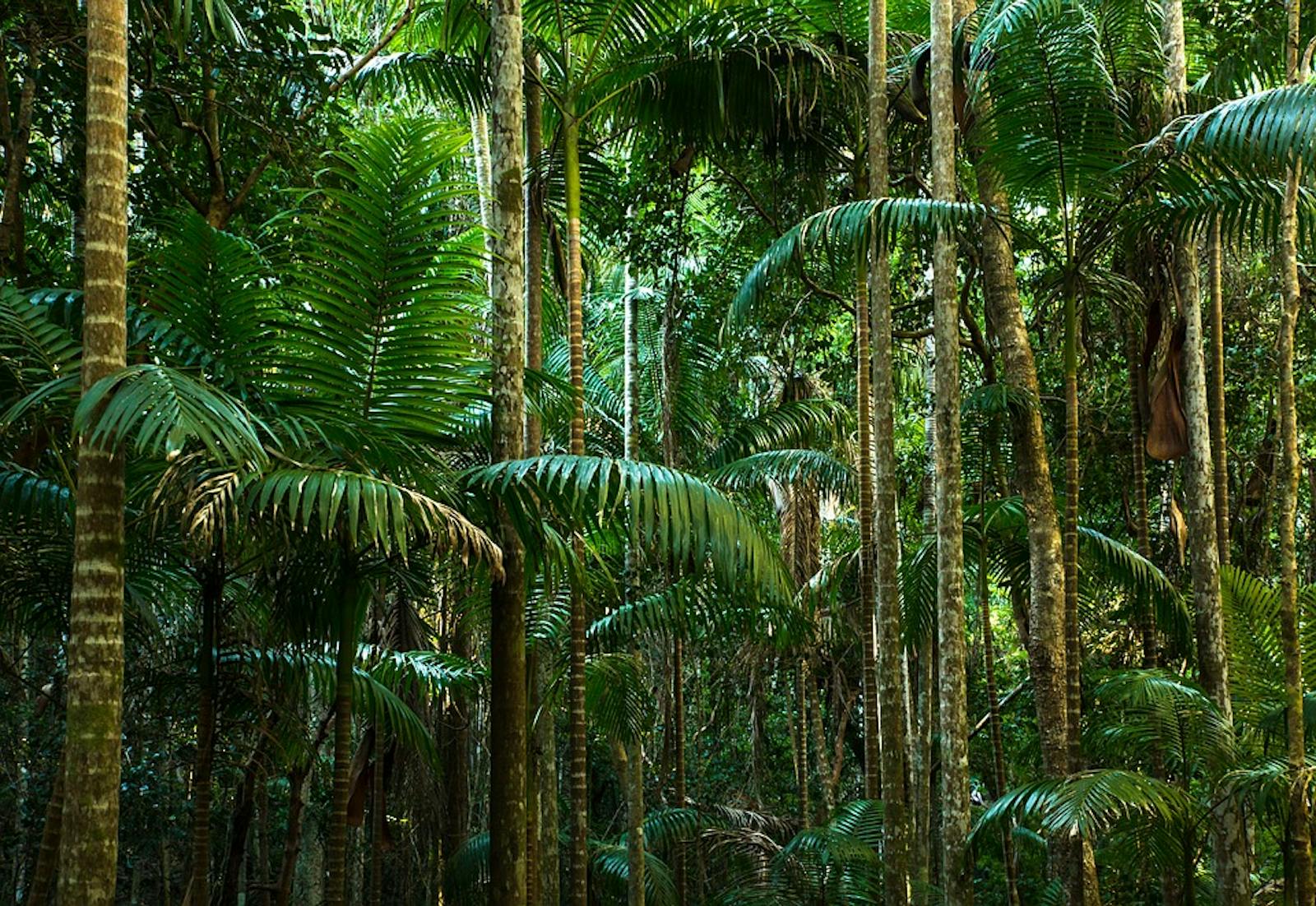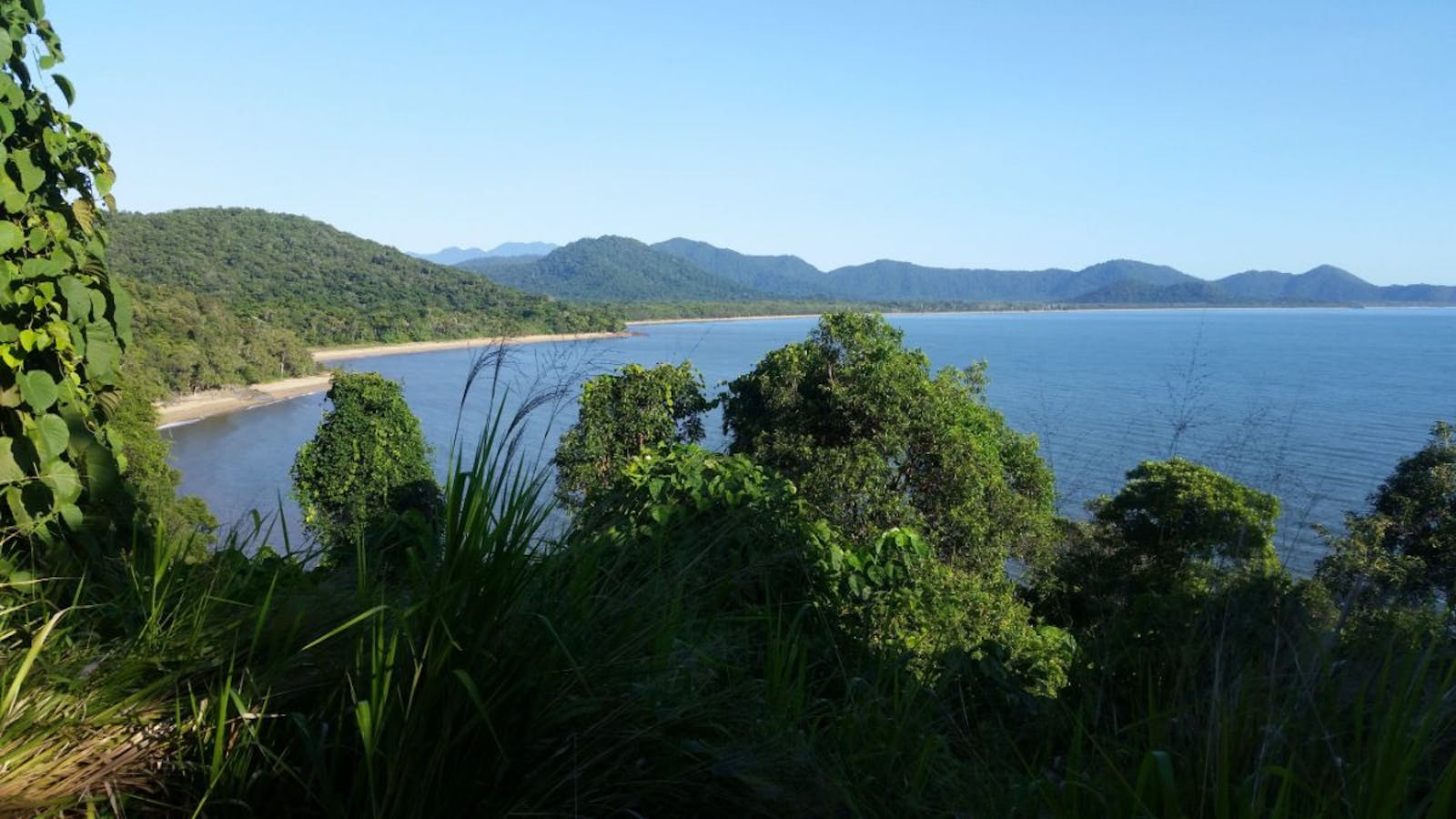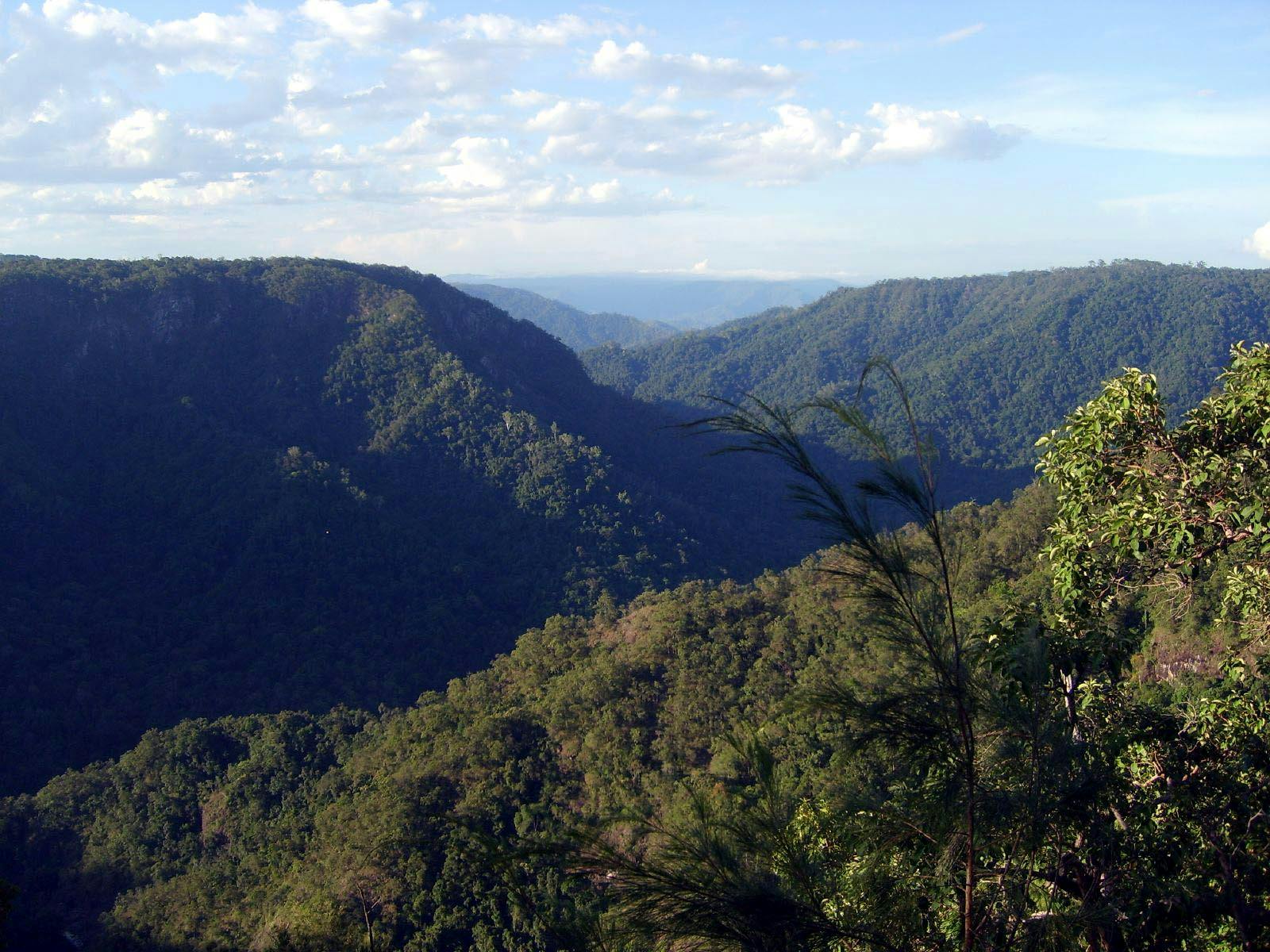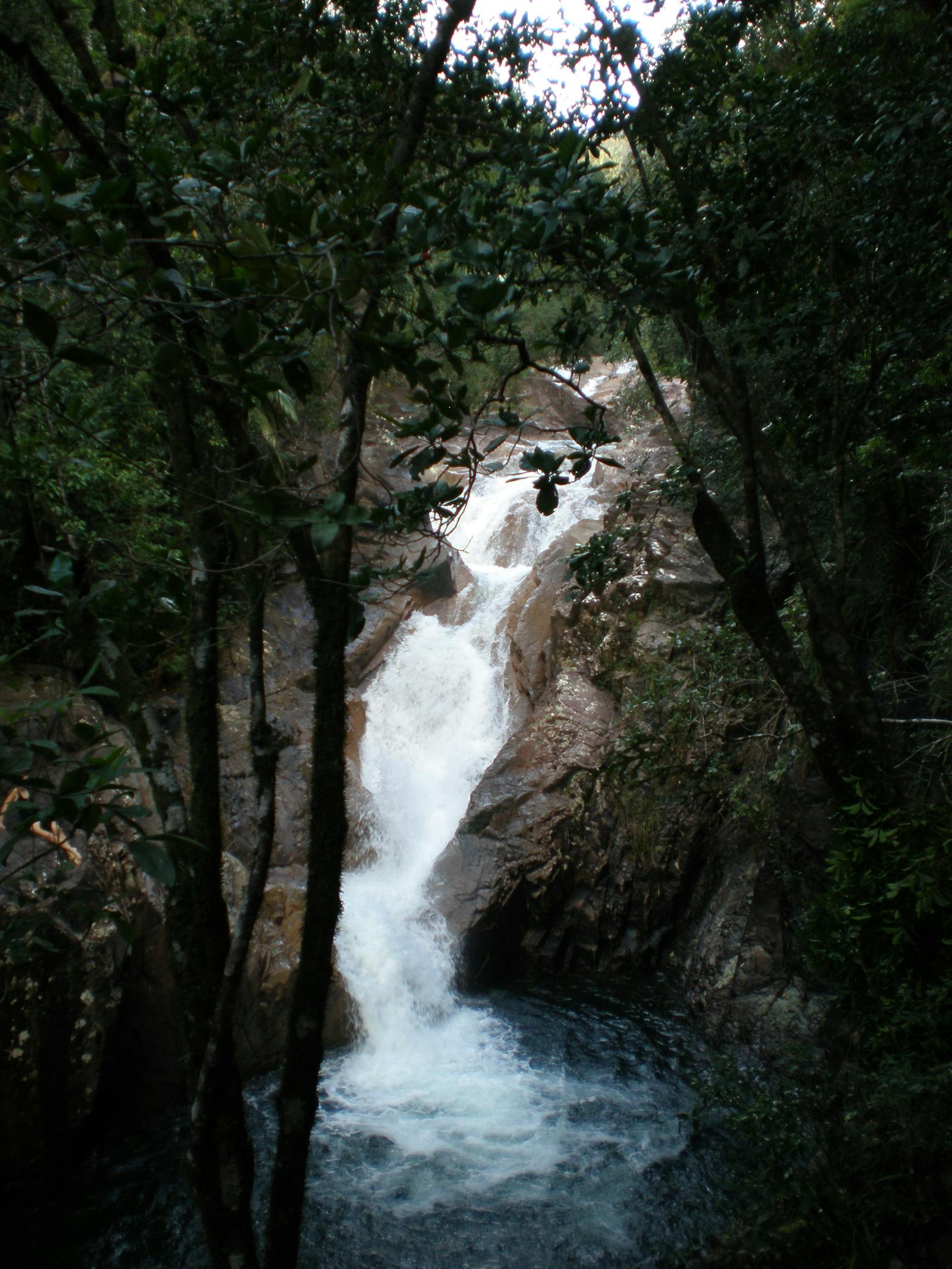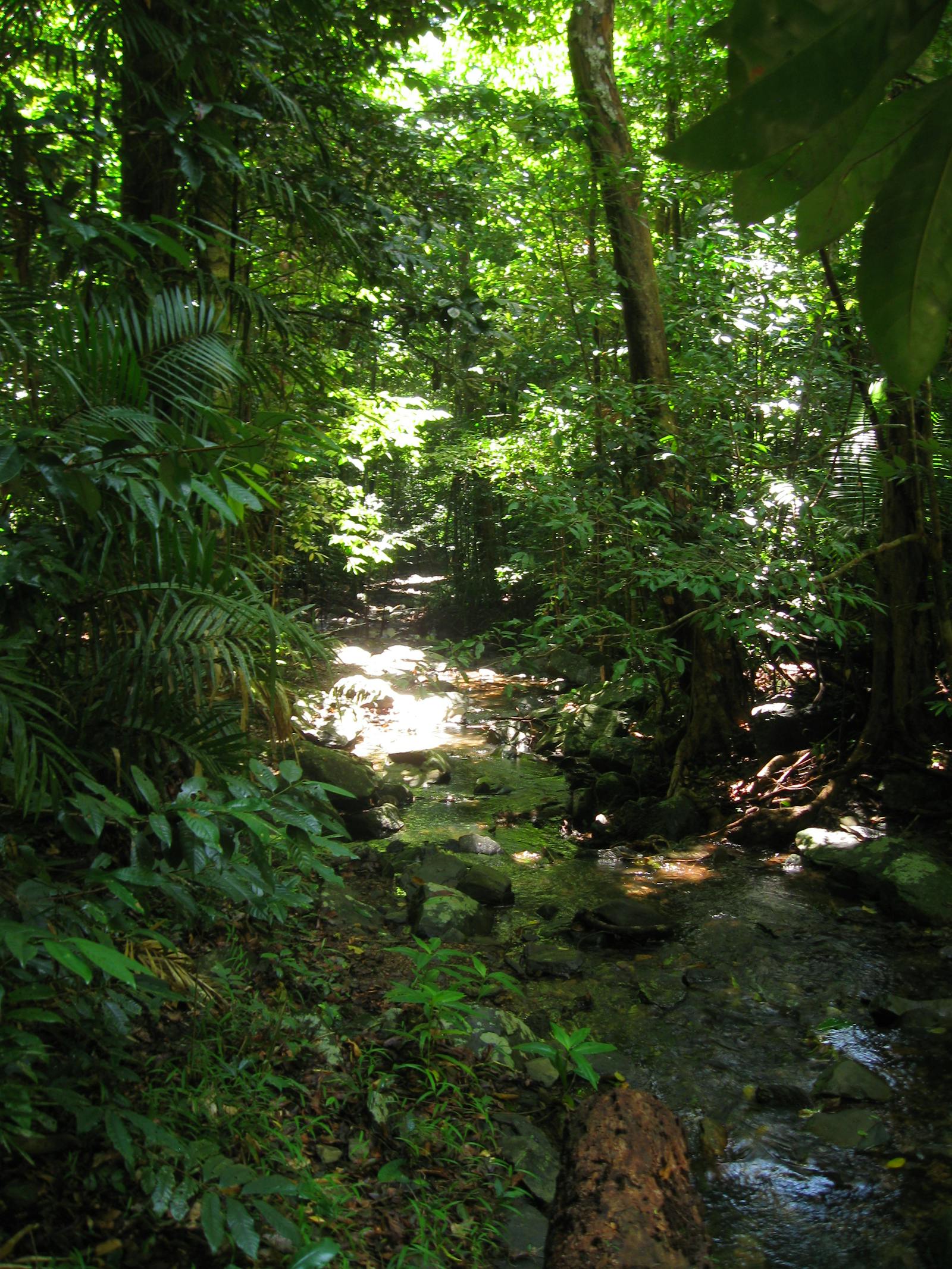Queensland Tropical Rainforests
The ecoregion’s land area is provided in units of 1,000 hectares. The conservation target is the Global Safety Net (GSN1) area for the given ecoregion. The protection level indicates the percentage of the GSN goal that is currently protected on a scale of 0-10. N/A means data is not available at this time.
Bioregion: Queensland Tropical Rainforests & Savannas (AU9)
Realm: Australasia
Ecoregion Size (1000 ha):
3,472
Ecoregion ID:
150
Conservation Target:
57%
Protection Level:
7
States: Australia
Northeast Australia’s relict tropical rainforests are notable for ancient lineages of plants and animals and strong affinities with the tropical forests of New Guinea to the north. As one of the oldest and most isolated rainforests in the world, the forests host many ancient plant lineages, including some of the most primitive flowering plants in the world. The forests have high levels of endemism in both plants and animals, including several endemic monotypic genera (that is, only one member of the genus). The Southern cassowary, with its casqued and colorful head, is the Australian representative of the group and representative of these forests (two other Cassowary species are found in New Guinea). These large birds play an important role in dispersing tropical forest seeds.
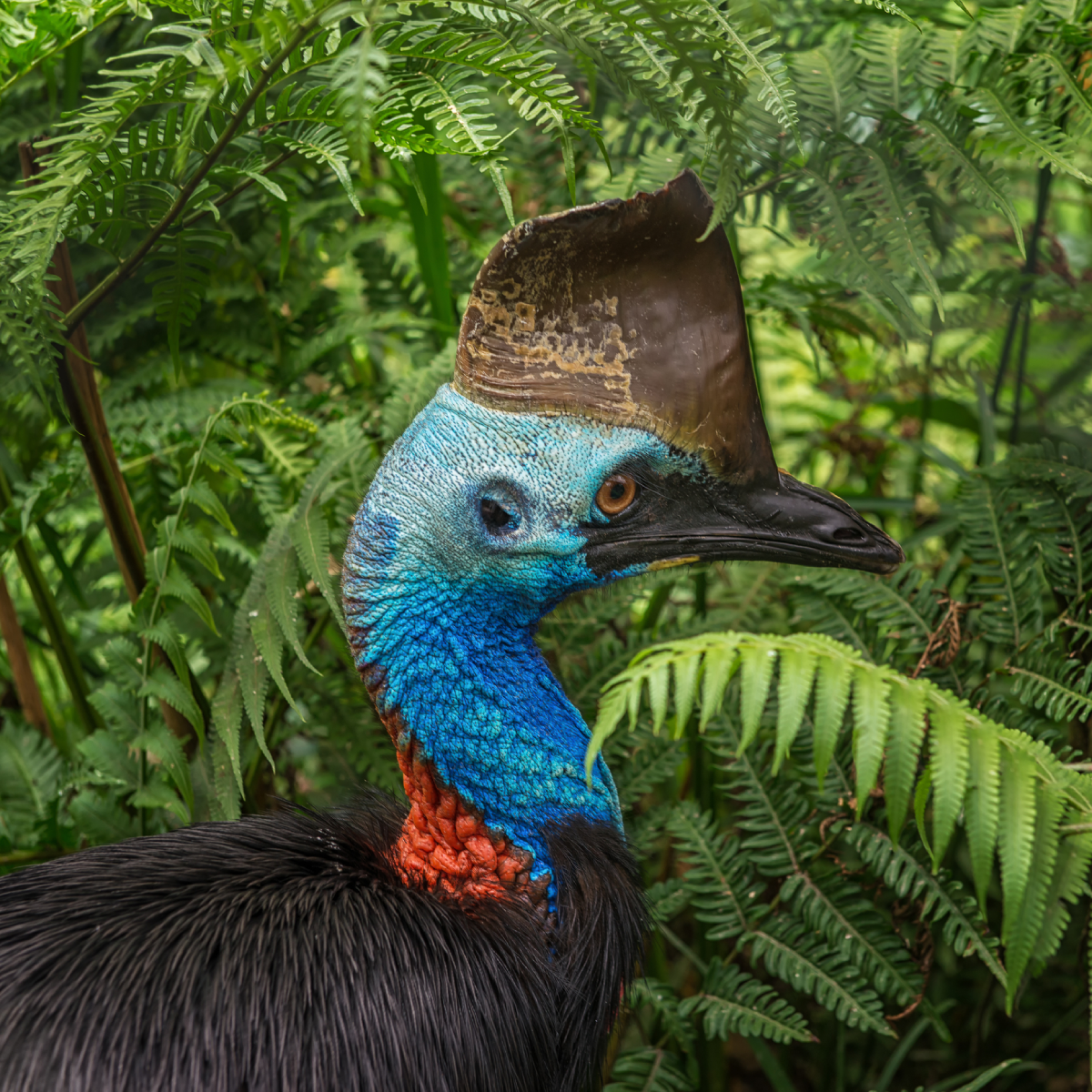
The flagship species of the Queensland Tropical Rainforests ecoregion is the southern cassowary.
Queensland’s rainforests occur on a narrow coastal plain and adjacent ranges that receive abundant rainfall. The forests have been classified into 16 major structural types and 30 broad community types, fringed and dissected by a range of eucalypt forests and woodlands, mangroves, and Melaleuca swamp communities. Queensland forests are cyclone forests that have few emergent trees and tangled, vine- and liana-filled understories. The flora has 4,700 species of vascular plants, representing 1,180 genera and 210 families. Forty-three genera and 23% of the region’s plant species are endemic. All seven of the most ancient fern families occur here. Twelve of the world’s 19 primitive angiosperm families are found here, including Annonaceae, Austrobaileyaceae, Eupomatiaceae, Himantandraceae, Myristicaceae, and Winteraceae. Two ancient and endemic plant families are Austrobaileyaceae and Idiospermaceae.
At least 672 terrestrial vertebrate species are known from the region and 264 species are confined to rainforests. Eleven species and eight subspecies of mammal are restricted to the ecoregion, including two species of tree kangaroo, northern bettong, mahogany gliders, and spotted-tail quolls. The tropical forests have 130 bird species that principally inhabit rainforests, with 10 being strictly endemic. Over 50% of Australia’s birds occur in this ecoregion. Of the region’s 170 reptile species, 22 are endemic, including 16 skinks. Twenty-one frogs are endemic to the region.
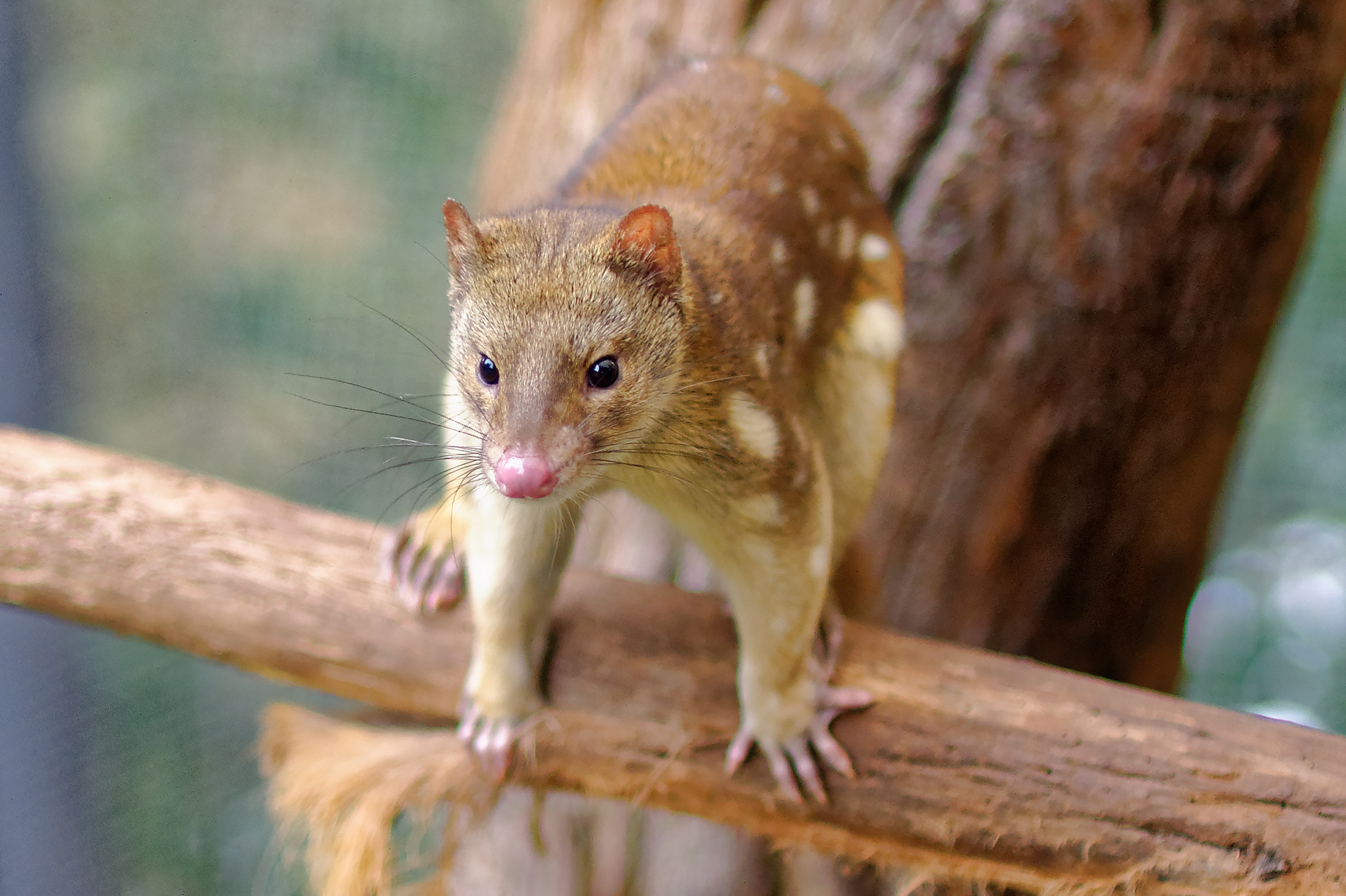
Spotted tail quoll. Image credit: Michael J Fromholtz, Creative Commons
Less than 1% of the original native vegetation of the coastal lowlands remains after extensive logging and clearing for sugarcane plantations. Many of the remaining forest fragments are isolated and suffer from internal fragmentation due to infrastructure lines and roads. Invasive weeds degrade natural communities. Invasive predators, such as feral cats, pigs, and foxes, prey on wildlife. Introduced cane toads poison native predators, such as quolls. The disease Phytophthora cinnamomic is also responsible for rainforest dieback in several areas. Although 41% of the ecoregion is managed as national park, some lowland centers of plant endemism are missing from the protected areas network.
Key conservation actions for the next decade are to: 1) increase efforts to reduce impacts of feral pigs, foxes, cats, and other pests; 2) formally protect remaining fragments of intact natural forest, especially those that support rare and threatened species; and 3) reduce internal fragmentation of remaining habitat blocks from infrastructure lines and roads through restoration and rerouting of planned projects.
Citations
- Goosem, S, G Morgan, JE Kemp. 1999. Wet Tropics. Pages 1-73 in PS Sattler, RD Williams, editors. The Conservation Status of Queensland’s Bioregional Ecosystems. Environmental Protection Agency, Brisbane, Australia.
- Werren, G, S Goosem, JG Tracey, JP Stanton. 1995. Wet Tropics of Queensland, Australia. 500-506 in SD Davis, VH Heywood, AC Hamilton, editors. Centres of Plant Diversity: A Guide and Strategy for their Conservation. Volume 2. Asia, Australasia, and the Pacific. WWF/IUCN, IUCN Publications Unit, Cambridge, UK.
- Williams, S. E., R. G. Pearson, and P. J. Walsh. 1996. Distributions and biodiversity of the terrestrial vertebrates of Australia’s Wet Tropics: a review of current knowledge. Pacific Conservation Biology 2: 327-362.
